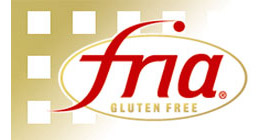|
|
|
Foods Allowed on a Combined Modified FODMAP and Histamine-restricted Diet – Dr Janice Joneja |
|
Please note: There are many different versions of both the FODMAP and histamine-restricted diets available from a variety of sources. Some are based on good evidence-based research; others are merely anecdotal and in some cases biased towards the interests of the proponents. The information provided here is derived only from authenticated, scientifically-based data. However, because of discrepancies in diverse versions, readers will inevitably find some differences in the dietary directives in this and other sources. It is also important to realise that everyone is different. Some people will find that they cannot tolerate some of the foods on the “allowed” lists, while others will discover that they can in fact tolerate foods on the “restricted” list. The best idea is to follow the directives closely, and if symptoms disappear, start to reintroduce a few of the restricted foods slowly and cautiously, noting any adverse reactions. If some foods “allowed” seem to cause an adverse reaction, avoid those foods and monitor your response. Meat, Poultry, Eggs Fresh or frozen non-processed (”natural”) meat from any animal Fresh or frozen non-processed (“natural”) poultry of any type Limited amount of egg from any bird. Fish Avoid all shellfish Avoid fish sauces Allowed: Fresh or frozen non-processed free-swimming fish of all types (Note: Some authorities recommend avoidance of Scombroid fish because of the occasional risk of histamine toxicity by bacteria, such as Morganella morganii in the fish gut. The bacteria produce the enzyme histidine decarboxylase, which acts on histidine in the flesh of the fish, converting it into histamine. However, there are only occasional outbreaks of “Scombroid fish poisoning” in wild fish, because conditions need to be right in order for the bacteria to multiply. So in most cases the fish are safe to eat. Nevertheless, some people prefer to err on the side of caution and avoid the species most at risk for histamine development. Scombroid fish species include:
Non-scombroid species that may also be responsible for “Scombroid fish toxicity”:
Grains and Grain Products All Gluten-free Amaranth Vegetables Alfalfa and alfalfa sprouts Fruit Blueberries Nuts and Seeds Almonds Herbs, Spices and Condiments Most culinary herbs and spices Basil Milk and Milk products All lactose-free Milk [from any animal as long as lactose-free] Beverages Lactose-free milk from any animal Beverages derived from allowed plants, marketed as “milk”, such as: Coffee: any without restricted ingredients – no flavoured coffees Fats and oils Fat from any meat and poultry Oils from plants except olive oil and soy oil, such as: Fish oil, such as: Source of Data:
|
If you found this article interesting, you will find many more general articles and research reports on coeliac disease here, and lots of information on the management of coeliac disease here.
You can also find articles and research reports on gluten intolerance here and articles on a wide range of other digestive conditions here.
For hundreds of gluten free foods see our freefrom food section here, and for nearly 800 gluten-free recipes see here.
And if you would like to get our FREE fortnightly e-newsletter with new products, recipes, articles and all the latest news from the allergy and freefrom world, just sign up here.








